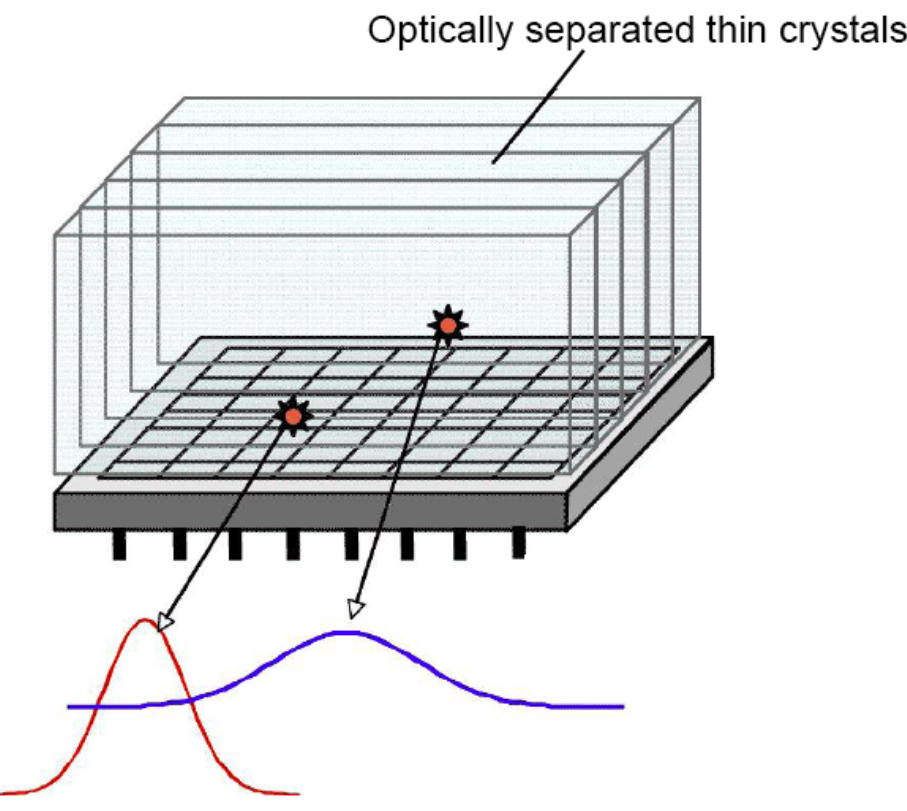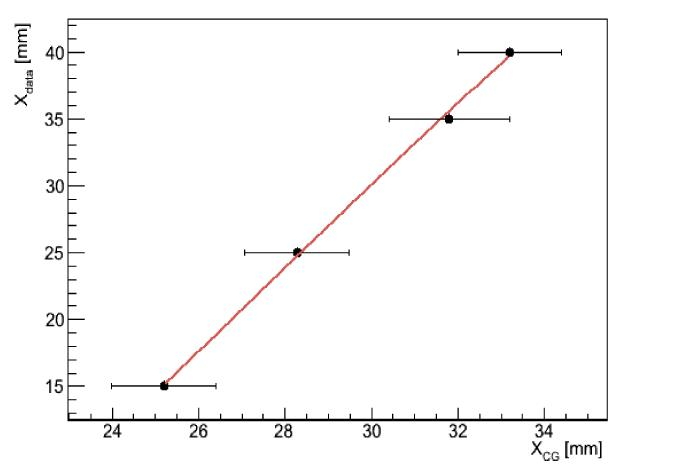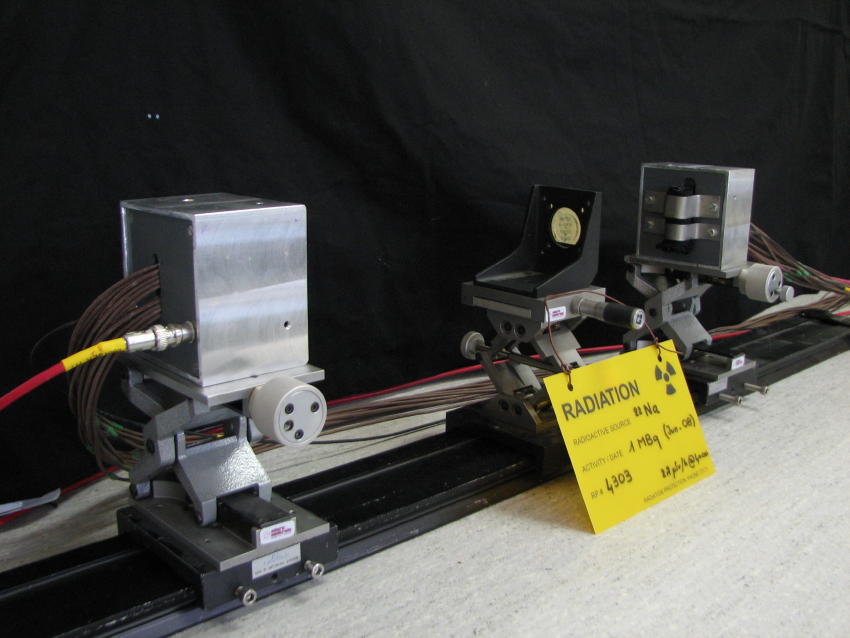


AQUA
ADVANCED QUALITY ASSURANCE:
Positron Emission Tomography with Crystals CRYSTAL - PET
Positron-emitting isotopes are produced all along the primary
hadron beam by interaction with the tissues; the positrons annihilate with
an electron producing two 511 keV photons, anti-parallel in the positron frame
and almost co-linear in the laboratory frame. The photons have a mean attenuation
length of ~ 10 cm in water, so most are absorbed by surrounding tissues and
typically only 15-20% emerge from the body over the solid angle. Due to the
relatively small production rate and fast decay time of the isotopes, on-beam
PET imaging has low event rates and is very demanding on efficiency and solid
angle covered by the detectors.
Inorganic scintillator crystals are the most commonly used detectors for PET.
Annihilation photons interact within the scintillator through Compton and photoelectric
effects, releasing energy to the detector. The absorbed energy causes the crystal
lattice to make a transition to higher energy state, from which it may decay
emitting lower energy photons. The scintillation is converted into measurable
signals usually using photomultiplier tubes (PMTs). The high gain, stability
and low noise of PMTs have rendered these devices the standard ones used in PET
scanners. The most common detector configuration used in commercial scanners
couples each detector block to four PMTs with light sharing, providing the position
of the conversion with an accuracy of a few mm or better. The development of
multi-anode position-sensitive photomultiplier tubes (PSPMTs) of square shape
allows accurate positional and energy information to be derived from the PMT
itself.
The basic approach is to use thin and long scintillator crystals
in contact with a multi-anode photomultipier; the light emitted by a gamma
conversion in the crystal produces signals on several adjacent anode pads;
analysis of the signal profile allows to reconstruct both the position of the
conversion in the plane of the sensor, and the depth of interaction in the
direction perpendicular to the anodes. Results of simulation and measurements
with a detector, oparated in coincidence with a small crystal to detect the
511 keV photins from a 22Na source are given un the CNAO
report.
 |
 |
 |
| Single-head PET setup | Correlation betweenreal and measured gamma conversion coordinate (X-direction, along pad rows) | Correlation between real and measured Depth of Interaction (Z-direction, perpendicular to anode pad plane) |
A dual-head system making use of a Micro-Channel Multi-Anode Photomultiplier and LYSO cristals has been built and tested, and provides reasonable results in terms of position accuracy and time resolution:
